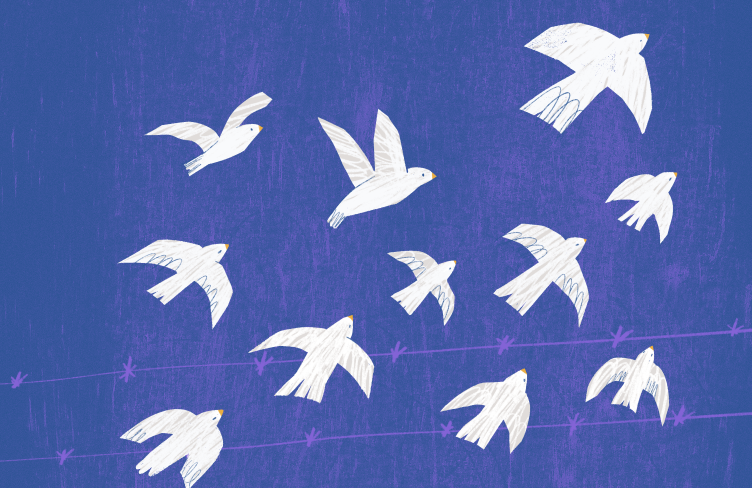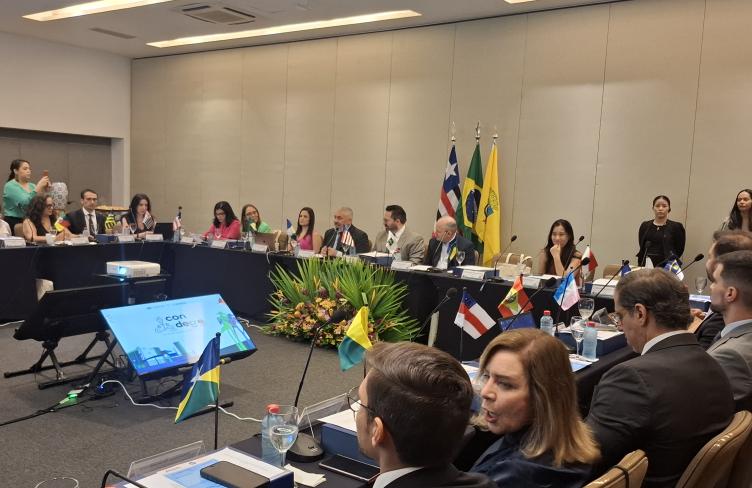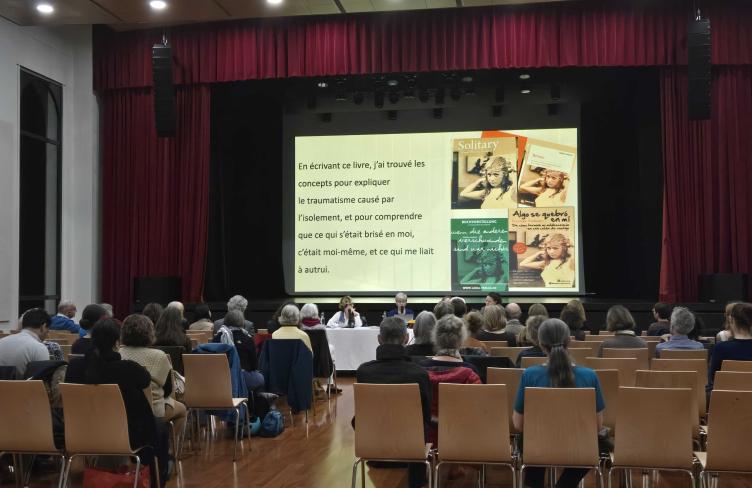
Iceland is not a country that attracts much criticism for its treatment of people in prison. With a prison population of around 150 individuals, held across five small prisons, a tendency towards less punitive and more lenient and humane measures, including the use of non-custodial measures,[i] it would be easy to presume that there is little to look out for.
Yet in 2021 Amnesty International started to hear concerns from defence lawyers about the use of solitary confinement in pre-trial detention. The organisation’s initial investigations identified that over the ten-year period between 2012 and 2021, 825 individuals had been placed in pre-trial solitary confinement. Ten of these were children. 99 people were subjected to prolonged solitary confinement.
Requested by police and approved by judges, solitary confinement is permitted under the Criminal Procedure Code when it can be justified on the basis that it is needed to stop a suspect from impeding a police investigation.
Unlike in other Nordic countries, there has been little scrutiny of the processes and practices involved in pre-trial solitary confinement in Iceland. The research I led for Amnesty International, published in Waking up to nothing: Harmful and unjustified use of pre-trial solitary confinement on 31 January, aims to change this.
This blog draws from my recent presentation to delegates at an Amnesty International Iceland Symposium in Reykjavik on 18 April, 2023, covering (1) key findings from Amnesty International’s research, (2) reflections on why the practice of pre-trial solitary confinement persists in Iceland, and (3) some of the current and future steps needed to address the situation.
Findings from Amnesty International’s research
Data provided by the Icelandic government to Amnesty International marked out a number of areas of concern: the high rates of solitary confinement over and above remand detention (61% in 2021); a high and rising percentage of those placed in solitary confinement were foreign nationals (57% in 2021); and the fact that 99 individuals had been held in solitary confinement for longer than 15 days over the research period (2012-2021).
The Icelandic government assured us, and the Committee Against Torture who reviewed Iceland in 2022,[ii] that there were rigorous procedural safeguards that would ensure pre-trial solitary confinement was not used unless “strictly necessary”. This motivated us to focus a large part of the research on these safeguards, drawing from the CPT’s standards in our analysis.[iii] For the research, we interviewed representatives of all of the main actors in the solitary confinement process: judges, prosecutors, defence lawyers, prison staff and managers and a number of current and former detainees. I was struck that judges’ and officials’ accounts of the legal process were starkly different to the accounts of defence lawyers and detainees. To supplement these interviews, we reviewed a number of court rulings that were available publicly and obtained a dataset from the Reykjavik Metropolitan Police covering a year’s worth of cases in which they had requested solitary confinement. We requested, but were unable to secure, permission to attend a custody hearing at which a judge considered a request for solitary confinement.
The full detailed findings can be found in the report but in short, we found that the government’s assurances were not held up by evidence, instead:
- decisions to impose solitary confinement relied on largely unchallenged interpretations of the “reason to believe that the accused would impede the investigation of the case”, without consideration of whether this was a likely or probable scenario;
- the grounds that prosecutors told us would warrant the use of solitary confinement were not always present in the data or accounts from detainees and lawyers;
- according to the only available data, judges approved 99% of prosecutors’ requests for solitary confinement and showed an almost unquestioning reliance on the police account in making their judgments;
- in some cases including one involving a child, solitary confinement was requested and approved on the sole basis that there was no other way of ensuring a suspect could not access a phone;
- judges apparently had no process for exploring the possibility of granting a less restrictive measure when faced with a request for solitary confinement and in no cases reviewed by Amnesty did a judge reject solitary confinement outright in favour of granting remand or a non-custodial measure, even at the stage of extending an initial period;
- almost no-one involved in the process of requesting or approving solitary confinement or in providing legal defence felt it was their responsibility to consider the individual’s mental health or disabilities that would affect their ability to withstand solitary confinement.
We heard of numerous cases of detainees with intellectual disabilities, neurodiverse conditions and severe mental illness ending up in solitary confinement. “When a claim for custody or claim for solitary confinement is not accepted [by the judge], you are just like ‘yeah wait…what?’…you are always a little bit in shock” (defence lawyer) “I have sometimes said in court that I could just as well be a plumber in the courtroom as I don’t have access to any information” (defence lawyer) “I found my colleagues took it too lightly. Using detention is very convenient for the police, there is an attitude that we are on the same team, we are giving in too lightly” (judge). [Quotes extracted from the report.]
Finally, one of the more surprising aspects to the research was finding that once in prison, a court order for solitary confinement was interpreted as grounds to impose a regime of harsh, blanket restriction. The Icelandic term “einangrun” is translated as “solitary confinement” or “isolation” in different contexts. Although the term is not defined in detail in any law or regulation, it was being interpreted in practice by prison staff as necessarily amounting to the international definition of solitary confinement.
Detainees all received meals through a hatch in their cell door, a maximum of one hour a day in the austere, bare and unsheltered exercise yard and had no access to the prison’s library or gym. Solitary confinement cells were in good condition but had frosted glass in their external windows and other than their cells and the yard, there was nowhere for detainees to go for a change of environment even after several days in isolation. A “request culture” meant anything beyond a routine interaction with staff, or access to books or a DVD player relied heavily on detainees themselves asking. Although in recent years some improvements have been made, access to healthcare including mental healthcare was inadequate.
The yard is a nightmare…this is a brutal yard. And over there, the bars on top…I mean you’re not a spiderman, I do not know why this is needed up there.”
They were playing by the rules. There was everything through a hatch and no human contact. You didn’t see who you’re talking to.”
Why does the use of pre-trial solitary confinement persist?
Although solitary confinement is not used to the extent it used to be,[iv] I believe there are a number of reasons for its continued use in Iceland.
Firstly, because it is legally possible and culturally ‘acceptable’ within the systems that rely on it, there has been little incentive to challenge it. Put simply, prosecutors request it because they are used to it and believe it is necessary for their investigations, and judges provide insufficient challenge as to the grounds for the requests. A number of defence lawyers told us they were unable to effectively challenge solitary confinement requests or orders, and saw little possibility of changing this reality; others who secured their work directly from the police were seen as operating too “smoothly” or making things to “comfortable” for investigators.
Secondly, because there has been insufficient emphasis on finding alternatives. It was notable that although almost all of our interviewees were willing to reflect on the harms of solitary confinement, they almost always had in their minds a clear reason why it could not be done differently: because there was no other way of restricting phone access (prosecutors), because staffing levels were inadequate (prison managers), because they did not have adequate time to review case files (judge).
Thirdly, because there has been inadequate challenge by torture prevention bodies. We are critical of the CPT in the report who after their most recent visit reported they were reassured that the use of pre-trial solitary confinement “had much diminished and was now rare” without any reference to data to support this. Their comments on some aspects of the regime are at odds with Amnesty International’s findings and they did not take a view on aspects of the physical environment (the exercise yard or the frosted glass) which they have criticised in other contexts.[v]
Furthermore, Iceland’s relatively new NPM have not commented on any of these issues, nor made any comment on the incompatibility of aspects of the legal framework with international human rights law.[vi] The Ombudsman interprets legislative restrictions on commenting on “activities of the courts” as precluding his ability to comment on the practice. In my view this interpretation is at odds with the NPM’s preventive mandate, under which the body should be actively questioning the high rates of pre-trial solitary confinement, why less restrictive measures are not being used, and the blanket and harsh restrictions imposed on detainees in court-ordered solitary confinement.
Is there hope for change?
As a result of this research, Amnesty International took the view that solitary confinement cannot be justified solely to protect the interests of a police investigation because other less draconian measures can achieve this end.
The Icelandic authorities have taken the report and its findings very seriously, and I was heartened by the frank discussions with officials in Iceland who are clearly now focussed on the human rights concerns we raised.
However, unless it becomes harder in law and procedure for the authorities to impose and extend pre-trial solitary confinement, and unless decisions to impose restrictive measures are subject to greater scrutiny and challenge, Iceland will not make sufficient progress.
Important improvements are already being considered and – in some cases – implemented at Holmsheiði prison. Judges will visit the prison to see for themselves where detainees they put in solitary confinement end up. The report has been cited by lawyers in custody hearings and we are sure it is already contributing to a greater degree of scrutiny. The government is promising law reform but the parameters of this remain unclear and we are concerned that a prohibition on the application of solitary confinement to children may not be within its scope. Finally, I hope that Amnesty’s report will encourage greater scrutiny among torture prevention actors to ensure the issue of pre-trial solitary confinement in Iceland is given the focus and attention it merits.
Louise Finer is a freelance researcher and policy expert on detention, torture prevention and human rights, working with international and national NGOs and detention monitoring bodies. She previously ran the UK National Preventive Mechanism. Louise is a visiting fellow at the University of Bristol Human Rights Implementation Centre and at the University of Essex Human Rights Centre.
[i] Helgi Gunnlaugsson, Criminal justice in a small Nordic Country: The case of Iceland p.28
[ii] UN Committee against Torture, Concluding observations on the fourth periodic report of Iceland, 9 June 2022 (CAT/C/ISL/CO/4)
[iii] Council of Europe, 21st General Report of the European Committee for the Prevention of Torture and Inhuman and Degarding Treatment or Punishment (CPT), 1 August 2010-31 July 2012, https://rm.coe.int/1680696a88 (pp.37-50); 26th General Report of the 1 January – 31 December 2016, April 2017, https://rm.coe.int/168070af7a (pp.31-40)
[iv] See, for example, the account of the emblematic cases of Guðmundur and Geirfinnur, in which solitary confinement lasting between 87 and 627 days was an instrumental part of coercive measures used against six suspects in the disappearances of two men in 1974 in (Anthony Adeane, Out of Thin Air: A True Story of Impossible Murder in Iceland, 2018, London)
[v] Council of Europe, Report to the Icelandic Government on the visit to Iceland carried out by the European Committee for the Prevention of Torture and Inhuman or Degrading Treatment or Punishment [CPT], 28 January 2020, para. 29, footnote 53 and para. 47.
[vi] Report of the Althingi Ombudsman’s visit to Hólmsheiði Prison, 13-15 January 2020, https://www.umbodsmadur.is/opcat/heimsoknir- og-skyrslur/fangelsid-holmsheidi/vidburdur/9/fangelsid-holmsheidi.


